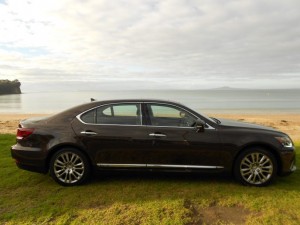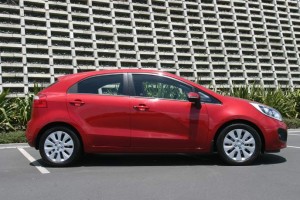Noise is a distraction when driving, and not just the type of noise that your mates make when you’re coming back from a party. In this article we’ll cover off why you should choose a quiet car, and how you should choose one. You’ll find out what causes noise, and what you can do to reduce it.
What creates cabin noise?
Car manufacturers constantly battle with noise, vibration and harshness (NVH) to minimise the car occupants’ exposure. These are created by physical and contributing factors.
Physical factors
Road noise
Roads are rough – even relatively smooth concrete. The noise of tyres passing over the top of the road is significant. Changes to the road surface can significantly increase or reduce the general level of noise. If you’re driving on gravel or a really coarse B road you’ll experience more noise than if you’re on a fairly smooth, freshly sealed motorway.
The tyre transmits all the bumps and vibration through the suspension components and into the chassis whereby the whole car functions as an object that creates noise.
Engine noise
Constraining the sound of a number of cylinders with exploding fuel is important, and the noise of this is carried towards the back of the car via the exhaust, through the muffler and out the exhaust tip. If you have a hole in the exhaust you’ll notice that your car sounds much louder. The muffler has baffles in it to deaden the engine noise.
It’s not just the fuel explosions that make noise, though; your engine has belts, pulleys and other moving parts that contribute, albeit in a minor way, to the overall noise.
Sports exhausts are often greater diameter with less muffling so that the engine isn’t restricted, and this increases the volume of the car.
Reflection, refraction and conductive vibration
Your car consists of a huge number of parts screwed, glued and otherwise fastened together. As sound enters the cabin some of these will vibrate in sympathy, creating more noise, and other surfaces will reflect and refract sound towards you. Some shapes of windows can cause this kind of focusing of sound.
It might also be items that you are carrying. For example, there might be a low frequency vibration below 20Hz that you can’t physically hear because our ears can’t hear frequencies below 20Hz. However, if this causes coins to rattle then that sound becomes audible and part of the entire noise mix in the car.
Wind noise
Wind noise is the final big factor in how much noise you experience. Your car has to push its way through the atmosphere and as it does that it splits the wind causing turbulence and eddies. As the wind passes around objects such as wing mirrors and door handles, and through small spaces such as panel gaps and the grille, it creates noise.
Vehicle manufacturers attempt to create a vehicle that is very little wind resistance, i.e. it has a low coefficient of drag. Generally, the less drag, the less the wind is churned up, and the quieter it is, everything else being equal.
External items such as a roof rack can also add noise.
Contributing factors
As well as occupants and pets that can create noise, your driving style influences the amount of noise created by your engine and tyres. If you make the engine work through the gears, it will create more noise. If you driver harder around the corners, there will be more road noise. And if you have the stereo on loud, it has to be heard over the top of all the physical factors otherwise there’s no point.
If you drive with the air conditioning on then you will have the noise of the air coming through the vents; whereas if you drive with your window open you have the noise of the air being split by the B pillar plus less insulation from road and engine noise.
Reducing cabin noise
Deal with anything that vibrates
In some cases a vibrating panel just needs to be tightened to stop it vibrating. Try removing items from your glovebox and ashtray if you can’t pinpoint a specific sound.
Change your tyres
The tyres are the easiest thing to change to have a measurable difference, often in the order of several decibels. Make sure you’re looking after your tyres, too, with the correct inflation and wheel alignment.
A number of factors affect how noisy a tyre is:
- Width – more tyre on the road means more noise and more rolling resistance which is worse for fuel economy, but it does also mean more grip (up to a point)
- Softness – softer tyres absorb sound more easily, but will wear out more quickly
- Sidewall height – a higher sidewall absorbs sound better (which means your big alloys with low profile tyres that look better will create more noise)
Use third party insulation
You can buy DIY insulation that you can attached to your firewall (the plate of metal between the engine and the cabin) and under the carpets. This will add some weight to your car therefore there will be a slight penalty in terms of the amount of fuel used, but it is possible to get a reduction of a few decibels if you do it right.
Check your door seals and window tightness
If your door seals are worn or split they will let noise in. Also check that your windows close tightly as even a small crack will let sound in.
Measuring noise
You can get an app for your phone to measure noise, but it won’t be that accurate in terms of actual decibels. It would, however, provide a good comparison between several cars in that you would be able to tell which one was quietest.
The sound level itself is measured in decibels (dB). This indicates the sound pressure as it travels through the air. Decibels are a logarithmic scale and this means that volume increases exponentially. Three decibels is the threshold of where most people can hear a change in volume. A 10dB increase is a doubling of the perceived volume. A 20dB is four times the perceived volume. A 30dB increase is eight times the perceived volume and so on.
Every 3dB increase means that your ears will only tolerate half as much time before they start to be damaged. The accepted standard is 85dB for 8 hours. Therefore 88dB is only acceptable for 4 hours, 91dB only acceptable for 2 hours and so on.

Lexus LS600hL: you struggle to hear the engine sometimes. And it’s often just running on the electric motor
The range of sound between the minimum level we can hear and when a sound wave becomes a shock wave is 0-194 decibels. Most natural environmental noise sits between 20-120db with rustling leaves at 20dB and a thunderclap at up to 120dB. Conversation speech is around 65dB, riding a motorbike and be 90-100dB and your average family car is around 65-75dB at 62mph.
Expensive executive cars can be much quieter, and hypercars much noisier. For example, you want to get a TVR Sagaris (I do) – you’ll be looking at around 90dB at 62mph. Want a top-of-the-line Lexus LS600hL hybrid? You’re looking at under 55dB at 62mph. That 35dB difference means the Sagaris is well over eight times as loud as the Lexus at the same speed.
What should you do?
Choosing the right car
Manufacturers sometimes publish their cabin noise figures. Bear in mind that they will be recorded in ideal conditions and not on a B road in Wales. They can be useful to compare, though.

Small, cheap cars like this Kia Rio diesel can be quite noisy
Different types of car will have different noise characteristics. An SUV which has to force its way through the wind like a brick is likely to create more noise than a car that is sleek and aerodynamic. An estate will tend to be more noisy than a saloon because the noise created at the back of the car can enter the cabin area more easily within an estate whereas it’s trapped in the boot area more effectively with a saloon.
Sports cars will be deliberately constructed to make the noise part of the feature of the car – if you’re buying a sports car you’re buying it for the total experience. Bigger exhausts, wider tyres, less compliant suspension (which transmits sound into the cabin), and a more highly tuned engine contribute to the noise.
Also you might find that a small car with a 3-cylinder engine is equally as noisy because there will be less money spent on sound deadening, because the engine is small is will be closer to the driver, and if there’s not enough power then you may have to thrash the engine to make it accelerate fast enough.
People often buy cars for how they make them feel. Buying a convertible sports car comes with a set of expectations that includes having some kind of engine noise. But do you want that noise all the time? On long journeys we’ve seen that noise can not only be tiring, but can also damage your hearing. The choice is ultimately up to you. It would be foolish to buy a car solely on the noise level when you can actually make some difference yourself by putting third-party insulation in, changing your tyres and altering your driving style.
Take a few cars out for a drive and use either a noise meter or a noise measuring app on your smartphone.
